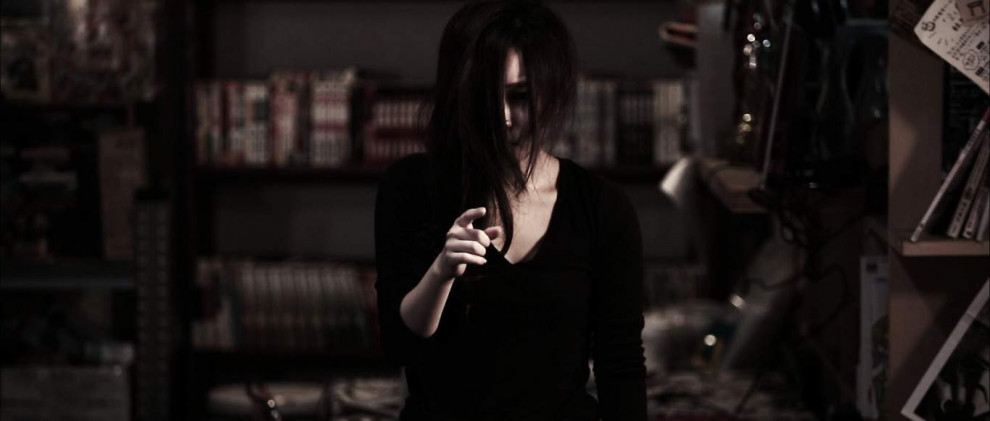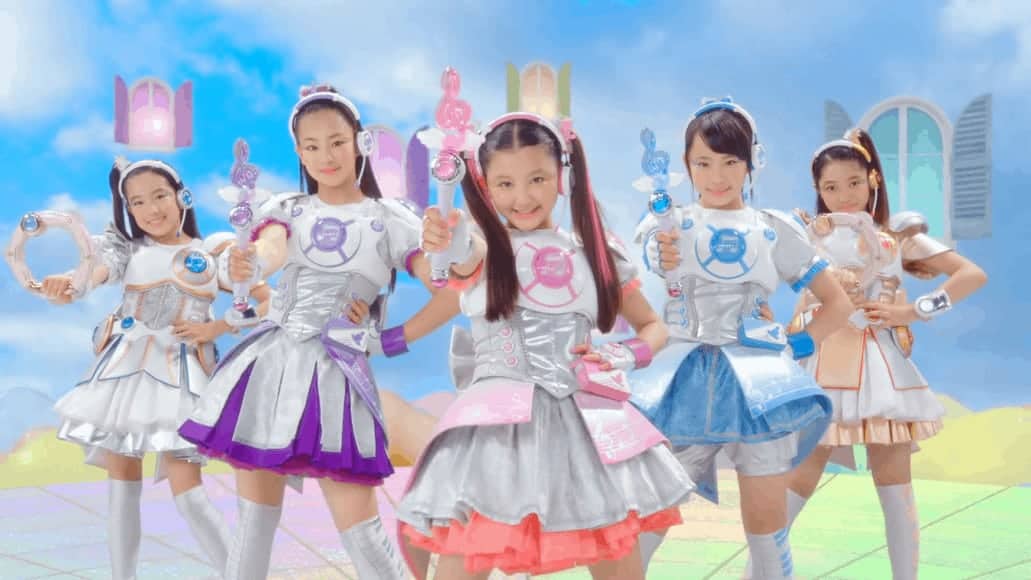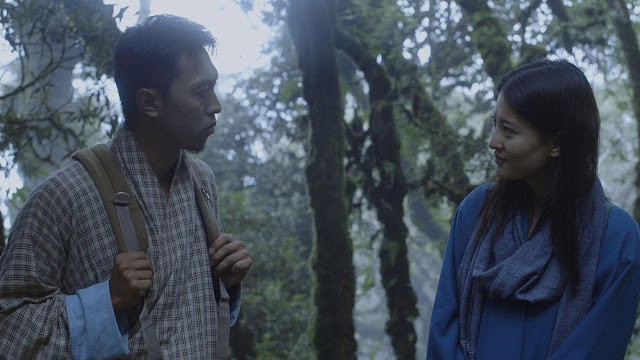With a minuscule budget of 700,000 JPY (about $6,300), Jun Tanaka attempts to present a new take on the ghost (horror) story genre. The film premiered at Osaka Asian Film Festival, on March.
BAMY is screening at Nippon Connection

The introductory scene immediately sets the rather unusual tone of the film. Fumiko Tashiro is going up on an exterior elevator, when she witnesses a red umbrella flying outside the skyscraper she ascends. Some moments later, she is leaving the building and the same umbrella crashes in front of her on the street. The event alarms her and a passerby, who turns out to be an old acquaintance from college, Ryota Saeki. The story then flashes forward a year later, when the two of them are engaged, and have started living together. However, Ryota has been hiding a secret from her all this time: he has the ability to see ghosts, in a trait he does not understand and has made him somewhat neurotic. As time passes, his psychological status worsens and jeopardizes both his upcoming marriage and his work (in a warehouse). At the same time, he meets another woman with the same ability, Sae Kimura, who is even more terrified than he is. One more unexpected event complicates his life even more.
Jun Tanaka stated about the concept of the film: “The red thread of fate – an East Asian myth of a thread that ties destined lovers together – is nothing but a curse. We cannot will miracles to happen; they are forced upon us, abruptly and violently, by an unfathomably great power. One cannot escape it, one cannot resist it. The mythical thread then, if it exists, is surely something monstrous. Faced with such a force, man is always small and powerless. This miracle picks its targets arbitrarily, toys with them, and will not relent until its thread has drawn the fated pair together.”
This point is represented, visually, by the almost omnipresent red umbrella, who symbolizes the above red thread, the connection between Fumiko and Ryota, which seems impossible to be cut. The presence of ghosts represents the second point; about the lack of control people have over their fate, and in essence, their lives. In that fashion, Tanaka communicates a rather pessimistic comment, which has people as puppets of fate, with little or none authority upon it. While the message is significant, the relationship of the two protagonists do not justify such a strong connection, since it seems like a usual, even uninteresting one, where the woman has the dominant role of the boss-mother and the man the one of the absent-minded man-child. Furthermore, the highly surrealistic ending sequence makes the message even more confusing and abstract, as the supernatural seems to give its place to the fantastic.
On the other hand, the aesthetics are almost without a fault, particularly when one considers the budget of the film. The cinematography is impressive, as the tints of grey that dominate the movie provide a very atmospheric setting, where horror, confusion, and insecurity seem to thrive. In this background, the portrayal of the ghosts, whose faces are always in the shadows, never actually appearing on screen, becomes even more ominous, as it also justifies Ryota's psychology, who seems to witness them everywhere. This imaging highlights the use of lighting in the movie, which is on a very high level. The framing is also very accomplished, presenting some interesting perspectives of the action in connection to each setting.
The sense that something very bad is going to happen is heightened even more by the soundtrack, which is comprised mostly of eerie chanting, and the use of sound, where Tanaka implemented an unusual technique. The sound becomes gradually louder at particular scenes, but at the point of its apogee, complete silence ensues, and the expected catastrophe indicated by the heightening of the sound never actually arrives. One would think that this tactic is infuriating, but it functions quite well, retaining a constant sense of agony throughout the film. Lastly, I enjoyed the fact that the various kissing scenes in the film have a distinct exploitation taint, being lengthy and quite passionate, emitting a sense of abnormal eroticism.
Hironobu Yunikaga as Ryota is the definite protagonist of the film, and is quite good in the role of a man in the brink of the nervous breakdown, who tries to hide his situation and present himself as normal, in order to keep his relationship. The moments he stands still, abruptly, when he sees a ghost are the highlights of his performance. Hiromi Nakazato is quite good in the archetypical role of the wife-mom, who refuses to see that something is wrong. Misaki Tsuge as Sae Kimura has a small role, but is rather good in presenting a constantly terrified woman. The scene when she becomes violent is her highlight.
“BAMY”, despite some faults in the narrative, is an accomplished debut, and shows that Jun Tanaka is a talent that definitely deserves more than one look in the future, particularly because some of the essence of Kiyoshi Kurosawa's horror films seems to be lurking in his style.


















